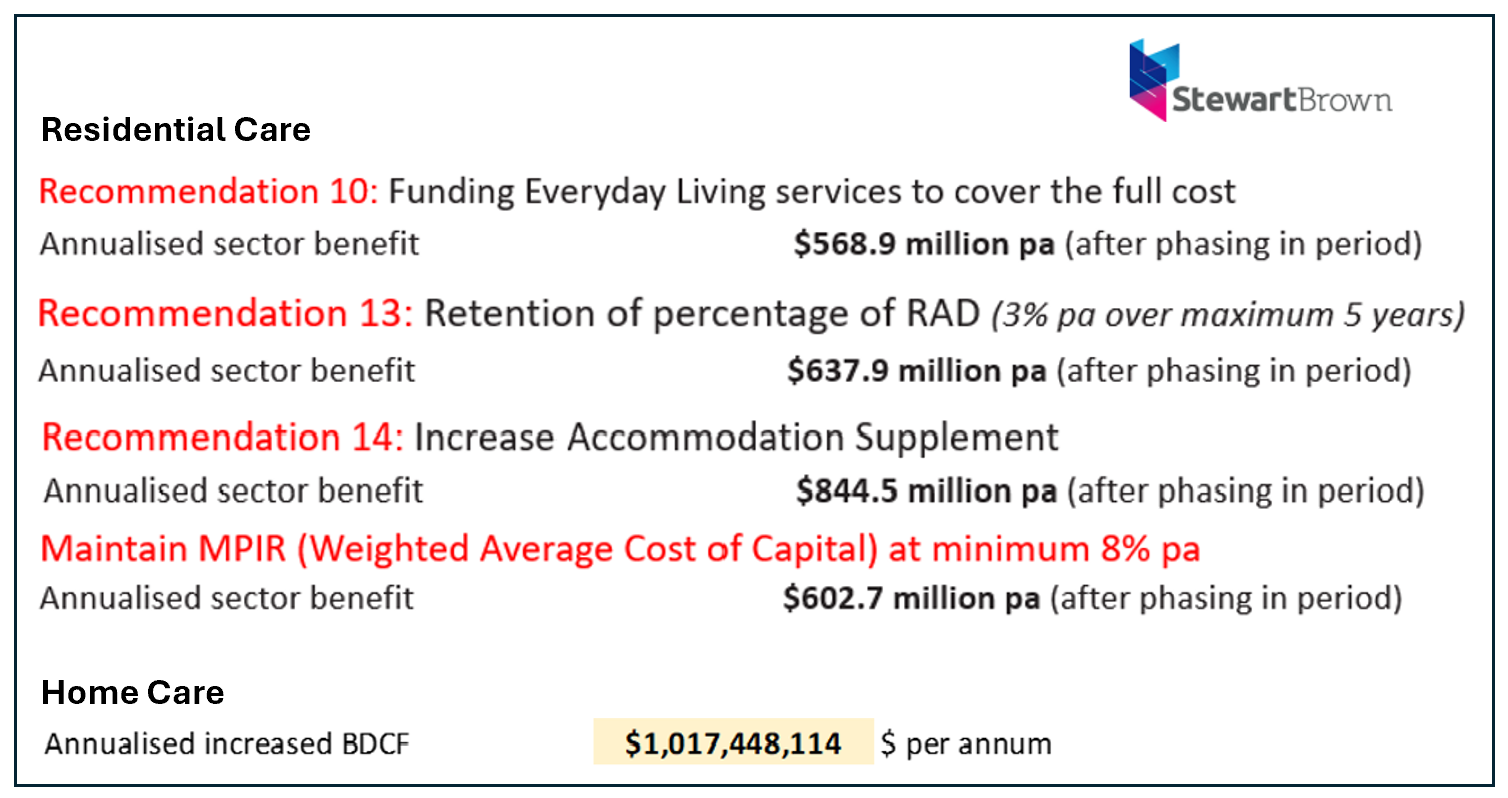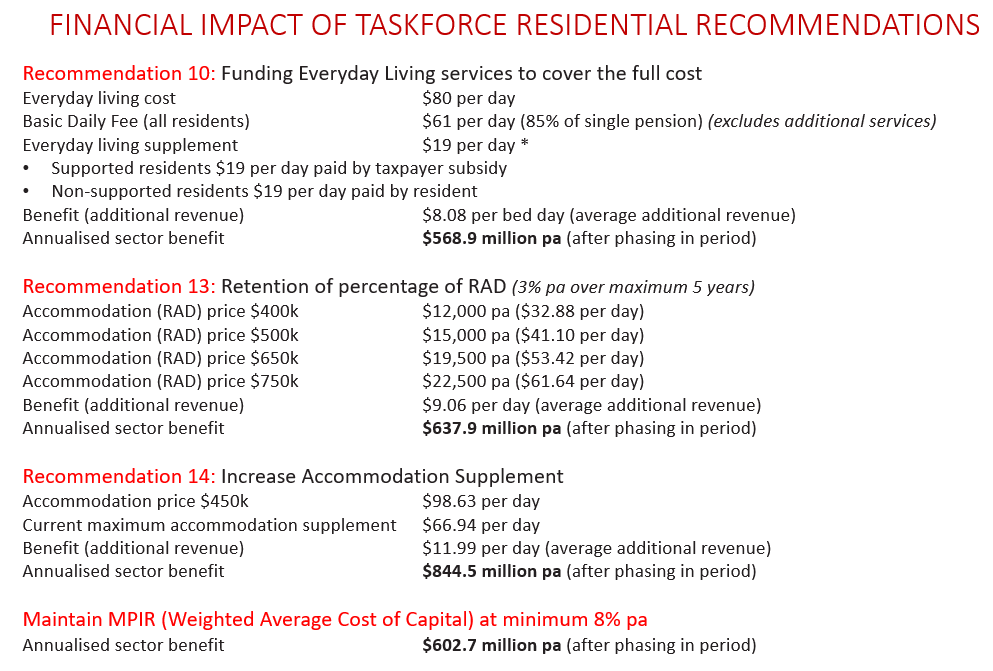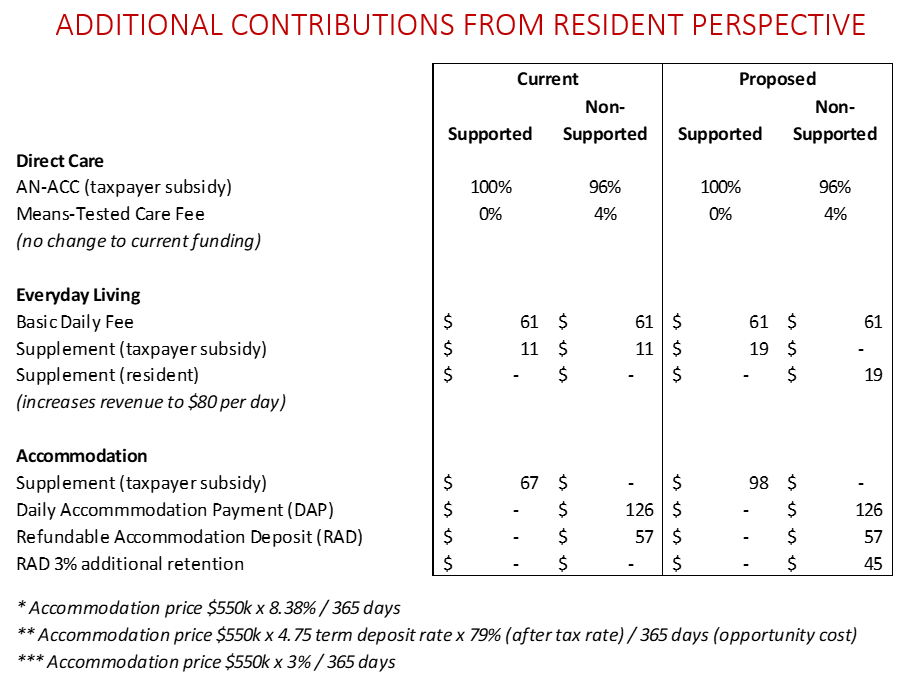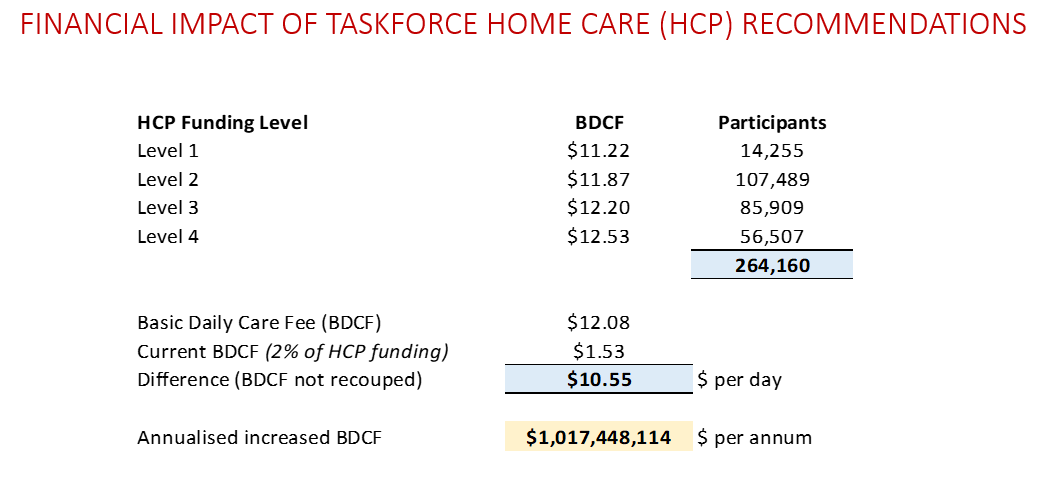Just released StewartBrown modelling calculates Taskforce recommendations (if implemented) will deliver an additional $3.76B to both aged care sectors
Just released StewartBrown modelling calculates Taskforce recommendations (if implemented) will deliver an additional $3.76B to both aged care sectors This morning Grant Corderoy and the StewartBrown analysts released summary calculations, pointing...

This morning Grant Corderoy and the StewartBrown analysts released summary calculations, pointing to where the recommendations of the Final Report of the Aged Care Taskforce are likely to deliver additional cash to support sustainability in aged care.
In summary:

The combined additional revenue across the two sectors would total $3.76 billion. StewartBrown cautions it would be three years before these funds are in full flow and is based on all recommendations being implemented.
We have reproduced the StewartBrown fact sheet provided to us in its entirety below:
Residential Aged Care Modelling
This is the forecast aggregate additional revenue for residential aged care if the proposed funding reforms as included in the Taskforce report are implemented. Please note that there is a lag period of up to three years for the full effect to be received, as current residents are grandfathered, and it will be the new residents who progressively pay the increased contribution.
It must be noted again that the additional consumer contributions do not apply to direct care delivery (RN’s/EN’s/Personal Care/Allied Health/Recreation/Medication) as these are separately paid by a care subsidy (AN-ACC) which is at least 96% paid by the taxpayer. These are purely in relation to every day services (food/cleaning/laundry/utilities) and accommodation.
The increased consumer contribution amounts ($568.9m + $637.9m +$602.7m = $1,809m) have been highlighted.
Recommendation #14 ($844.5m) is increased taxpayer subsidy for financially supported persons accommodation (not paid by the resident)

Financial Effect for Residential Age Care Residents
From a residential aged care perspective, the proposed increased fee (cost) structure is below. The highlighted areas are the proposed additional consumer contribution. Briefly, a financially supported resident has no increased cost (they are covered by the taxpayer subsidy). All non-supported residents (those with means) will pay additional $19 per day for everyday living (hotel) services (food/cleaning/laundry/utilities). The cost of providing everyday living services is $78 - $80 per day, so the increased contribution is in relation to the non-supported resident is paying the actual cost (which is fair as this is the case all their lives).
In relation to accommodation, similarly the supported resident has no increased cost (covered by the taxpayer subsidy). A resident paying a Daily Accommodation Payment (DAP) has no increased cost. The resident who pays a Refundable Accommodation Deposit (RAD) will have 3% pa deducted up to five years (noting that the average length of stay in under 3 years). This will provide a more equity between a DAP and a RAD as well.

Please also note that the above contributions are not based on a normal means-testing protocol, in that if a resident is deemed to not be financially supported (ie a self-funded retiree) they then pay the additional contribution. This is not adjusted or scaled based on your means, all persons paying an increased contribution for everyday living and accommodation services pays the same amount.
Home Care Modelling
The Taskforce Report is effectively stating the persons receiving home care services should pay a fixed consumer contribution depending on the service received. Similar to residential care, direct care (clinical) services are by majority taxpayer subsidy funded (98%) and it is the other services such as lifestyle, independence safety and everyday living (cleaning/maintenance/food) that the consumer contributions are levied. Should this reform be implemented the aggregate costs (after the three year phasing in) would amount to $1,017m annually.

The SOURCE's coverage of the Final Report of the Aged Care Taskforce:
- Aged Care Minister releases Taskforce Final Report with 23 recommendations - potential $3.6 billion revenue injection
- Aged Care Taskforce Final Report - the key recommendations
- Big structural changes on the way: pay for accommodation, pay for services in home care
- Taskforce recommendations all about shifting the ground and conversations
- What the Aged Care Taskforce Final Report means for retirement living operators





